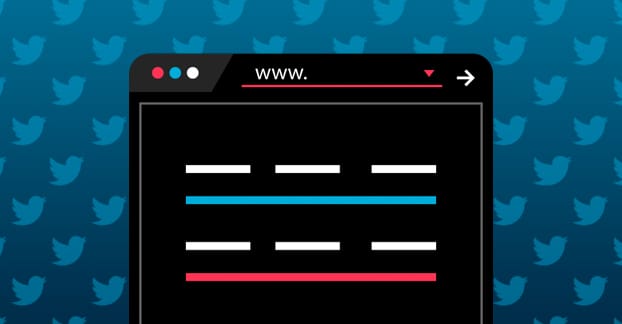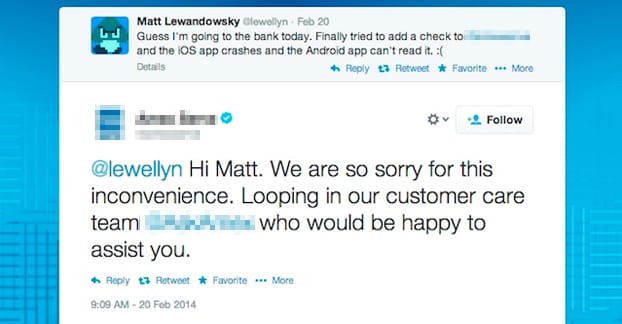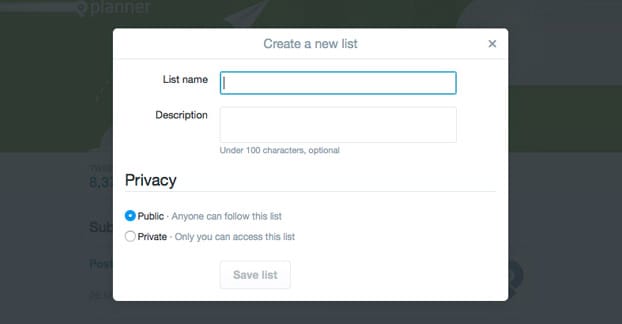One of the best sources of new followers for your Twitter account, believe it or not, is the Twitter accounts of your competitors.
“But they’re fans of my competition! They wouldn’t follow me.” That’s where you’re wrong. The fact is, most people don’t have all that much brand loyalty. They might prefer to buy a Dell over an HP computer, but if a decent enough deal comes along, they’ll switch. People don’t generally shop for a new car by narrowing down the brand first; they shop by style, by vehicles that meet their needs, and go from there.
Sure, there are always a few stubborn brand loyalists. Sometimes you find someone whose family has worked for a company for generations, and won’t jump ship. Sometimes you find someone who has had very negative experiences with other competition and will stick with the certainty that comes with their loyalty. However, most of the time, brand loyalty isn’t that important.
At least, not in the realms of social media. After all, getting a follower on Twitter is pretty different from getting someone to buy your product. Obviously, the end goal is to get them to buy from you, but you and I both know most of your followers aren’t going to be customers right away. The first goal is simply to get them to follow you, and that’s relatively easy.
You can poach followers from your competitors, though “poach” isn’t necessarily the right word. Poaching implies that you’re stealing them, that you’re doing something illegal, and that you’re taking something away from someone. In reality, you’re just putting yourself in front of a certain audience that happens to be the audience your competition has built, and getting those people to follow you. Most of the time, they won’t be unfollowing the competition or anything. It’s not really poaching, so much as it is sharing.
Step 1: Identify your Real Competitors
Your competition in a retail store versus your competition online versus your competition on Twitter can be different groups of brands. A small soft drink company might compete for store shelf space against Coke and Pepsi, but it might be more appropriate to look at companies like Jones Soda Co. or a small local manufacturer.
The first thing you want to do is make a list of anyone you consider your competitors. Then you want to run searches on Twitter for various keywords and product-related phrases that show you people posting in your niche. Look for other competitors, groups that are either on par or smaller than your company, and anyone you might have missed.
Next, find and harvest the URLs for the Twitter accounts for each of these companies. Write down their main accounts, and write down other accounts if they have them. Customer service accounts are excellent for this, though they might not exist in your industry all that much.
You should also look for accounts that accumulate traffic in your niche and industry, but who aren’t brands. Content aggregators, news reporters, and general public figures can all be good for this. They aren’t necessarily competitors, but they DO accumulate an audience that can be full of people you would want to follow you.
Step 2: Filter the Competition List
The next thing you want to do is visit each of those profiles and look to see if they’re valid competition or not. They might not be good targets for poaching.
There are three things that will make the profile invalid as a poaching target.
- The profile is not actually in competition with you. For example, if you sell one specific technology product, a company that sells many more – like IBM or Amazon – isn’t going to be in direct competition. This means that while you could get some followers from their account, many of the people you’d be trying to reach won’t actually care about your brand.
- The profile is old, dead, or inactive. If the brand last posted in 2013, you can be pretty certain that any audience they have is no longer valid for poaching. There’s no reason to go after carrion, after all.
- The profile’s followers are largely fake. It’s not going to do you any good to go after an account where the followers are all bot accounts. You’re looking to poach their followers, but accumulating bots does you no good. Not that you’ll get them; the bots tend to be follow-and-forget, completely unattended as far as organic actions are concerned.
Remove any of the accounts from your list if they meet one of the three criteria. You have enough accounts to go through that you don’t need to waste time on the ones that aren’t going to benefit you.
Step 3: Look for Disgruntled Fans
Setting aside your account list, you want just the names of your competition, so you can run searches for them. You’re looking for people who are complaining about the brand, in particular.
The idea is pretty simple. If someone is complaining about service A, and you offer service B, which is the same thing but better, you step in and tell them about it. “Hey, are you having troubles? I’d be happy to help.” That’s really all you need to say; it’s enough to get them to look into who you are and to maybe tell you about their problem.
This is a good way to not just get new followers, but to get new customers. It helps a lot of if you have a special introductory offer or competitor swap offer you can extend to them. If one of the primary reasons they don’t switch to you is cost, having a discount for onboarding can alleviate that fear.
One thing you might want to do before you reach out to a user is check your records to see if you’ve communicated with them before. It’s entirely possible that they were one of your old customers and that they left you for some reason. If you know this, you can either ignore their pleas – since they might not be willing to come back – or you can acknowledge that they were former customers. A tweet similar to “Hey, looks like nobody’s perfect. Willing to give us another try?” can go a long way.
You will have to play this by ear. Some people will be too mad to want to change, or will use this experience as an excuse to drop your entire industry. This is also the kind of technique you can only pull off if you know your product can do what the user is complaining about; if you step in to help someone but it turns out you can’t help them, you just wasted time.
Step 4: Get Additional Circulation
One of the tips I recommended in a similar post about poaching followers on Instagram relies on you finding those accounts that act as news reporters or content aggregators in your industry. When you find these accounts, approach them and ask what they’re looking for in terms of the content they share.
Your goal here is to find or produce content that can be easily shared by these accounts. Some of them will be more than happy to add you to their roster. Some will be a little more cautious and will only share content they think is really valuable. If you can produce this content, or even just get them to mention your brand, you’re doing well.
While you’re at it, you can consider these people influencers, and add them to a campaign of influencer marketing. That’s a related but separate field, so I’m not going to talk about it too much here, but you can read more in this article.
Step 5: Make Lists to Use
Next up, make a new Twitter List. You’ll want to title it something so you can remember what it is, and you don’t need to make it public. Basically, you want to go through the various accounts you’ve added for your competitors and run them through an analytics service like Twitonomy. In Twitonomy, you can see the most active and engaged users for a given account. Add these people to your list.
Another source of people to add to your list are people who have created lists that your competitors are part of. Twitter has made it a little harder to see lists – there isn’t a bit top bar button anymore – but you can just add /lists to the end of any account URL and see the lists they subscribe to and the lists they’re part of.
Find the lists your competitors are part of, and find the creators of those lists. These are generally going to be engaged users and adding them to a list will make them check you out.
Step 6: Reach Out and Touch Somebody
So far, most of the work you’ve been doing has been setup work. Now it’s time to reach for the payoff. You have an excellent list of competitors and you have an actual Twitter List of their best followers. Now you need to monitor the feed form that list and actively engage with the content those users post.
If they ask a question relevant to your niche, answer it. If they post a concern about a product, shill yours and how it solves the issue. If they express doubt about a competitor, assure them that you’re better. If they post something newsworthy, like it, share it, and comment on it in an insightful way.
The goal here is to engage with these active users and get them to appreciate you as a brand. Some of them will follow you just because you liked a post they made. Some will follow you because you’ve left comments on their posts, or because they liked a discussion. Some will follow you because you helped them with a problem. Some will follow you because they want to jump ship from your competitor, and a follow is a reminder to do so.
Generally, the more engagement you deliver to a user, the more likely they are to follow you back. On a simple experiment, between a simple follow or a follow plus a like plus a comment, the triple-engagement method is much more effective. If you keep this up, you will gain followers, and they will generally be engaged followers.
One thing you need to be cautious about is engaging with the wrong people. You should add a blacklist or a filter to your lists to make sure you don’t engage with people where it would be a faux pas to do so. In general, the people you want to avoid are people who work directly for your competitors. You don’t want to accidentally approach the competitor’s chief technical officer and ask them to use your product, right?
Now, that’s not to say you can’t engage with these people. There’s an interesting level of camaraderie amongst competitors on social media. Generally, when you help each other out, you both benefit, and neither really steals customers from the other.
Bonus Step: Riff on Marketing
This isn’t a reliable strategy, but if you keep an eye on the promotions and ad campaigns your competitors are running, you can riff off of them. If a competitor makes a contest with an image submission, you can submit an amusing image relating to how your product dominates theirs. If they use a goofy hashtag you can mock, mock it with a hashtag response of your own.
One semi-recent example of this is how Coke and Pepsi both ran ads with the same image, just different captions, to riff on one another. That’s the kind of light-hearted marketing mockery you can use to your advantage. Being clever, especially publicly, without being hateful or insulting, can go a long way towards getting you a lot of social media followers.






